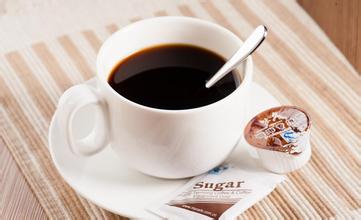Introduction of Indonesian Coffee Flavor Manor production area in Sumatra
Sulawesi Island, formerly known as Celebes Island "Celebes", is also called Celebes Coffee Celebes Coffee.
The most famous is Toraga, or Tonaga, Toraja.
Toraja coffee comes from Tana Toraja in the Tanatolaga region of South Sulawesi, South Sulawesi Province, named after the local population, the Toraga. Tana Toraja is located about 300km north of Makassar, the provincial capital of Wangkasek, and is a famous tourist destination in Indonesia.
At first, the coffee industry in Sulawesi mainly supplied the Japanese market. Japanese merchants established the original coffee industry on the island of Sulawesi. Coffee cultivation in Java was initially carried out in the form of large farms and was established by Dutch colonists in the 18th century. later, after World War II and many changes, it was gradually transformed into small farmers. High-quality Javanese coffee usually comes from five existing large farms. Although Java coffee production only accounts for about 10% of Indonesia's total coffee production, it is an important component of Indonesian boutique coffee.
The main coffee producing area on the island is located in Ijen Plateau, the Ijen Highland area around Ijen Volcano.
Java coffee is traditionally treated by washing Java is the most economically developed island in Indonesia and the most densely populated area.
Jakarta, the capital of Indonesia, located in the northwest of Java, is the largest city in Southeast Asia. In addition, Indonesia's second and fourth largest cities are located on the island of Java.
Java is the first region in Indonesia to grow coffee and has taken the lead in the world coffee market as early as the 18th century. The famous Java mocha, made from Java coffee mixed with Yemeni mocha, represents the coffee impression of an era. In addition, there are classic monsoon coffee Moosooned-coffee, or old coffee Aged Coffee Medan Medan and Padang Padang are important cities involved in coffee. They are the capital of North Sumatra and West Sumatra respectively, and they are also the most densely populated areas in Sumatra. The former is an important distribution center for Sumatran coffee exports, while the latter is also a well-known coffee production nearby, such as Ankola.
Coffee from Sumatra includes Arabica and Robusta, which is usually grown at high altitudes in the mountains, while robusta is grown in the lowlands. Coffee treatment is famous for its traditional "wet planing" method, Giling Basah,wet-hulled, which is partly derived from the local humid climate. Sumatra is the largest producer of Indonesian coffee, and well-known coffee growing areas are mainly concentrated in the northern mountains, including Aceh in the northernmost province of Aceh and Sumatera Utara in North Sumatra. Including the well-known Mantenin Mandheling, Lin Dong Lintong, Jiayushan Gayo Mountain.
The name of Mandheling coffee is said to come from the local people, mandailing. The producing areas mostly point to the mountains in the north of Lake dopa, and the specific producing areas need to be verified.
Lintong coffee comes from the foothills of Lake Lake Toba, the largest volcanic lake in North Sumatra, and its name comes from the small town of Sumatra named lintong in the southwest of Lake dopa. it is formerly known as "Golden Island" and "Jinzhou". It is famous for its rich gold deposits.
The topography of Sumatra is long and narrow. The topography of Sumatra is mainly from northwest to southeast of the island's Bali Mountains Barisan Mountains and the eastern lowlands. The mountains stretch, with more than 90 volcanoes and many volcanic lakes, volcanoes provide fertile soil suitable for coffee growth. Tropical rainforest climate, high temperature and rainy all the year round

Important Notice :
前街咖啡 FrontStreet Coffee has moved to new addredd:
FrontStreet Coffee Address: 315,Donghua East Road,GuangZhou
Tel:020 38364473
- Prev

Introduction to the flavor and taste of Paradise Bird Manor Coffee Manor in Papua New Guinea
Before I made coffee, I never knew where Babu was; I didn't know about birds of paradise; I didn't know there were coffee trees there. There are many countries in the world that have not attracted our attention, and Papua New Guinea is one of them. New Guinea is a large mountainous island shared by Indonesia and Papua New Guinea. The mountain aborigines on the island are straight.
- Next

Flavor and taste of Jamaican Coffee Manor introduce Atlanta Manor Jamaica Blue Mountain Coffee
It is necessary to carefully understand the myth of Blue Mountain Coffee, because the image of the past is often inconsistent with the reality of today. In 1725, Sir Nicholas Sir Nincholas Lawes brought the first blue mountain coffee trees from Martinique to Jamaica and planted them in St. Andrew) region. Today, the St. Andrews area is still a blue mountain.
Related
- Does Rose Summer choose Blue, Green or Red? Detailed explanation of Rose Summer Coffee plots and Classification in Panamanian Jade Manor
- What is the difference between the origin, producing area, processing plant, cooperative and manor of coffee beans?
- How fine does the espresso powder fit? how to grind the espresso?
- Sca coffee roasting degree color card coffee roasting degree 8 roasting color values what do you mean?
- The practice of lattes: how to make lattes at home
- Introduction to Indonesian Fine Coffee beans-- Java Coffee producing area of Indonesian Arabica Coffee
- How much will the flavor of light and medium roasted rose summer be expressed? What baking level is rose summer suitable for?
- Introduction to the characteristics of washing, sun-drying or wet-planing coffee commonly used in Mantenin, Indonesia
- Price characteristics of Arabica Coffee Bean Starbucks introduction to Manning Coffee Bean Taste producing area Variety Manor
- What is the authentic Yega flavor? What are the flavor characteristics of the really excellent Yejasuffi coffee beans?

